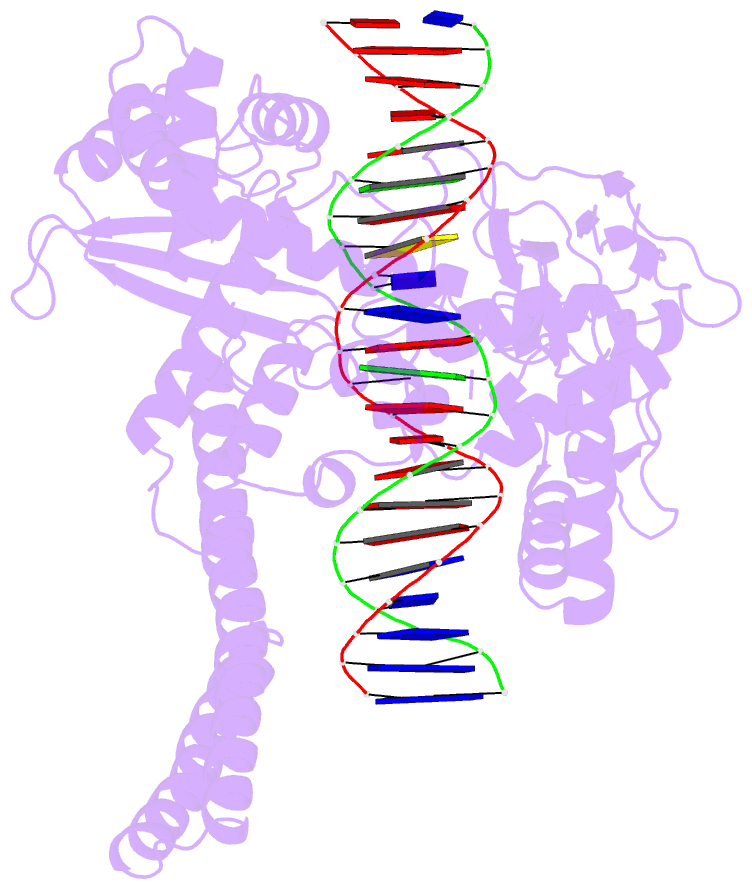Summary information and primary citation
- PDB-id
- 1r49; SNAP-derived features in text and JSON formats;
DNAproDB
- Class
- isomerase-DNA
- Method
- X-ray (3.13 Å)
- Summary
- Human topoisomerase i (topo70) double mutant k532r-y723f
- Reference
- Interthal H, Quigley PM, Hol WG, Champoux JJ (2004): "The role of lysine 532 in the catalytic mechanism of human topoisomerase I." J.Biol.Chem., 279, 2984-2992. doi: 10.1074/jbc.M309959200.
- Abstract
- Based on co-crystal structures of human topoisomerase I with bound DNA, Lys(532) makes a minor groove contact with the strongly preferred thymidine residue at the site of covalent attachment (-1 position). Replacement of Lys(532) with either arginine or alanine has essentially no effect on the sequence preference of the enzyme, indicating that this interaction is not required for the preference for a T at the -1 position. Although both the cleavage and religation activities of the K532R mutant enzyme are reduced, cleavage is reduced to a greater extent than religation. The reverse is true for the K532A mutant enzyme with religation so impaired that the nicked intermediate accumulates during plasmid relaxation assays. Consistent with the shift in the cleavage religation equilibrium toward cleavage for the K532A mutant enzyme, expression of the mutant enzyme in Saccharomyces cerevisiae is cytotoxic, and thus this mutant enzyme mimics the effects of the anticancer drug camptothecin. Cleavage assays with the mutant enzymes using an oligonucleotide containing a 5'-bridging phosphorothiolate indicate that Lys(532) functions as a general acid during cleavage to protonate the leaving 5'-oxygen. It is possible that the contact with the -1 base is important during catalysis to provide positional rigidity to the active site. The corresponding residues in the vaccinia virus topoisomerase and the tyrosine recombinases may have similar critical roles in catalysis.





